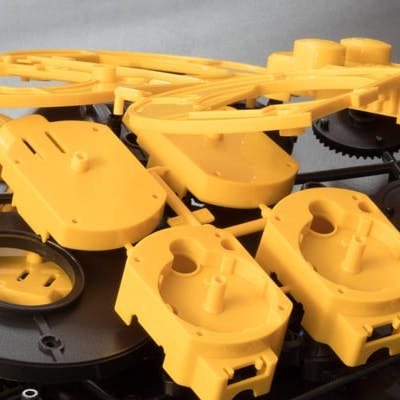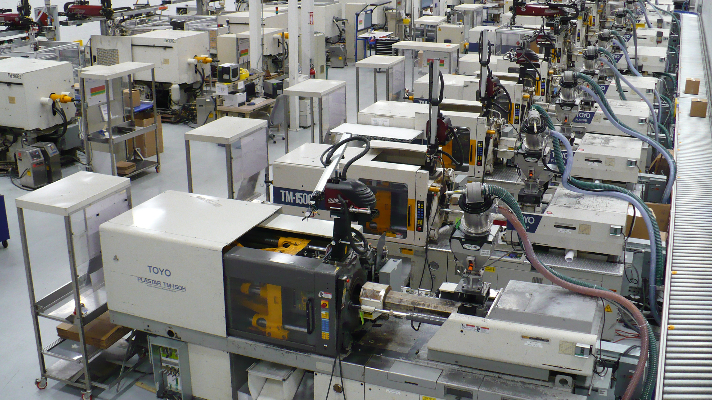The Role of Plastic Injection Molding in Producing Economical Industrial Parts
The Role of Plastic Injection Molding in Producing Economical Industrial Parts
Blog Article
The Future of Plastic Shot Molding: Technologies and trends to See
As the plastic shot molding sector evolves, several vital trends are arising that promise to improve its landscape. Automation and wise production strategies are set to improve performance, while the change in the direction of sustainable materials reflects a growing environmental awareness.
Automation and Smart Production
As the plastic shot molding industry evolves, automation and wise production are taking center stage, changing manufacturing processes - Plastic Injection Molding. The combination of sophisticated technologies such as robotics, IoT (Internet of Things), and artificial intelligence is enabling suppliers to boost effectiveness, lower operational prices, and improve product top quality. Automated systems improve process, minimizing hand-operated intervention and raising throughput, which is essential in meeting the increasing need for fast manufacturing cycles
Smart producing innovations assist in real-time monitoring and data evaluation, permitting business to optimize maker performance and predict maintenance needs. This proactive strategy not only reduces downtime yet likewise extends the life-span of devices. Moreover, making use of joint robotics, or cobots, boosts the versatility of manufacturing lines, enabling employees and makers to run alongside safely and successfully.
The fostering of automation in plastic injection molding is not just a trend yet a strategic essential for organizations aiming to remain affordable in a global market. By harnessing these innovations, makers can attain greater precision, reduce waste, and adapt swiftly to transforming client needs, placing themselves for lasting growth in a significantly automated future.
Lasting Materials and Practices
The push in the direction of automation and wise manufacturing has actually led the way for a better emphasis on sustainable products and techniques within the plastic shot molding market. Firms are progressively seeking environmentally friendly alternatives to conventional petroleum-based plastics, resulting in the fostering of recycled and bio-based products. These lasting materials not only lower environmental influence however likewise line up with consumer demand for greener items.

In addition, partnership in between manufacturers, product distributors, and environmental organizations is cultivating advancement in the development of sustainable products that meet performance criteria without jeopardizing quality. As policies around plastic usage come to be more stringent, the market is poised to adapt by accepting these sustainable methods, making certain long-lasting stability and minimizing reliance on non-renewable resources. The assimilation of sustainability into plastic injection molding is not merely a fad; it is coming to be an important component of business duty and functional excellence.
Advancements in 3D Printing
Current advancements in 3D printing technology are significantly changing the landscape of plastic shot molding. The combination of additive manufacturing processes enables for the rapid prototyping of intricate geometries that were when difficult or impossible to achieve via typical methods - Plastic Injection Molding. This ability not just increases product growth cycles but also decreases material waste, lining up with the growing demand for sustainable production methods
Additionally, the appearance of hybrid production techniques, which combine 3D printing and injection molding, provides manufacturers the ability to develop complex designs while preserving the effectiveness of mass manufacturing. This strategy makes it possible for the manufacturing of tailored parts tailored to details client needs without sacrificing the rate and scalability that injection molding supplies.
Additionally, developments in products, such as high-performance polymers and composites specifically created for 3D printing, are boosting the useful capabilities of printed parts. These materials can stand up to greater tension and exhibit enhanced thermal buildings, making them suitable for even more requiring applications.
As 3D printing remains to evolve, its assimilation into plastic shot molding procedures assures to boost efficiency, decrease prices, and foster development in product design, positioning suppliers to better meet the obstacles of an open market.
Data Analytics and IoT Integration
Data analytics and the integration of the Net of Things (IoT) are changing plastic injection molding by supplying makers with unmatched understandings right into their browse around this site operations. By leveraging real-time information accumulated from interconnected makers and sensors, manufacturers can keep an eye on efficiency metrics, recognize ineffectiveness, and optimize manufacturing processes. This data-driven approach helps with predictive upkeep, minimizing downtime and prolonging equipment life-span.
Furthermore, IoT integration enables for boosted quality control. By continually tracking variables such as pressure, temperature, and cycle times, makers can swiftly discover variances from developed parameters and make adjustments in real time. This not only boosts item consistency yet also lowers waste and scrap prices.
The blend of data analytics and IoT technologies likewise equips manufacturers to take on more active manufacturing techniques. With access to detailed data analytics, organizations can reply to market demands with higher adaptability, changing manufacturing routines and arrangements as required. This adaptability is essential in a quickly altering manufacturing landscape.

Personalization and Layout Adaptability
Just how can customization and design versatility enhance the competition of plastic shot molding? In a significantly varied market, the ability to provide tailored options is vital. Personalization enables suppliers to satisfy particular client needs, suiting distinct dimensions, shapes, and capabilities that standard items might not meet. This flexibility not only promotes client commitment but additionally opens up opportunities for brand-new company chances across numerous industries, from auto to consumer goods.
Improvements in layout innovations, such as computer-aided layout (CAD) and rapid prototyping, more boost this pattern. These devices make it possible for designers to create intricate geometries and complex patterns, which can be perfectly integrated into the production process. As an outcome, makers can respond swiftly to changing consumer preferences and market demands.
Furthermore, the implementation of modular tooling systems boosts layout adaptability, permitting quicker changes in between various product layouts without substantial downtime. This versatility can lead to reduced lead times and reduced production expenses, making firms extra affordable and dexterous. Eventually, welcoming personalization and layout flexibility in plastic shot molding not only boosts product offerings yet additionally enhances market positioning in an ever-evolving landscape.
Verdict
The future of plastic injection molding is characterized by substantial improvements in automation, lasting practices, and innovative materials. The integration of IoT and information analytics will certainly boost operational effectiveness and predictive upkeep. The adoption of bio-based and recycled products, alongside progression in 3D printing, will cultivate sustainability within the sector. Customization through modular tooling and quick prototyping will enable manufacturers to stay receptive and affordable to the vibrant demands of the blog here market.

The future of plastic injection molding is characterized by considerable innovations in automation, lasting methods, and ingenious products.
Report this page